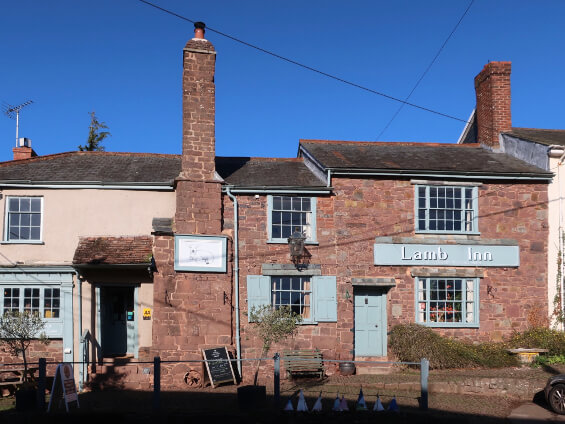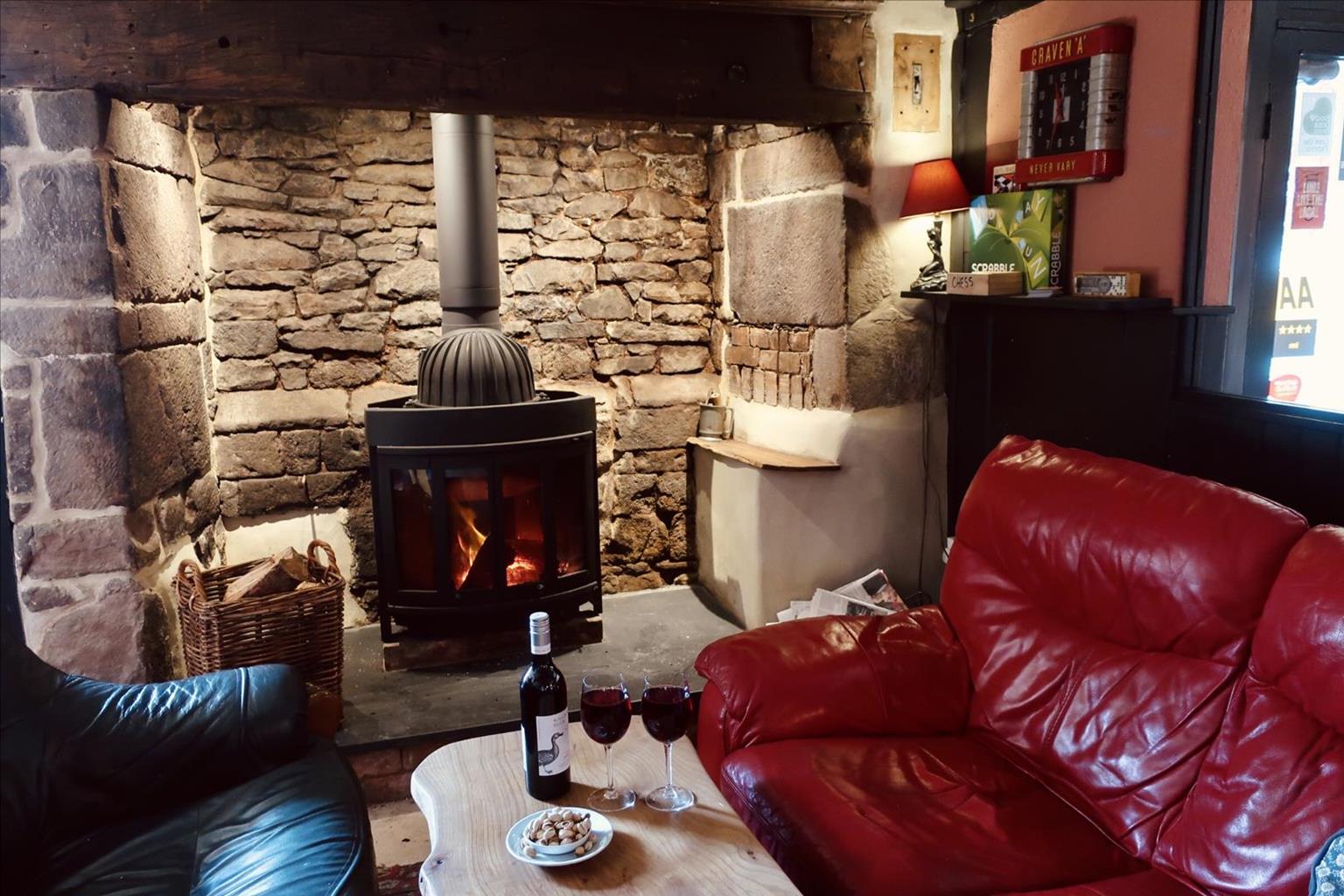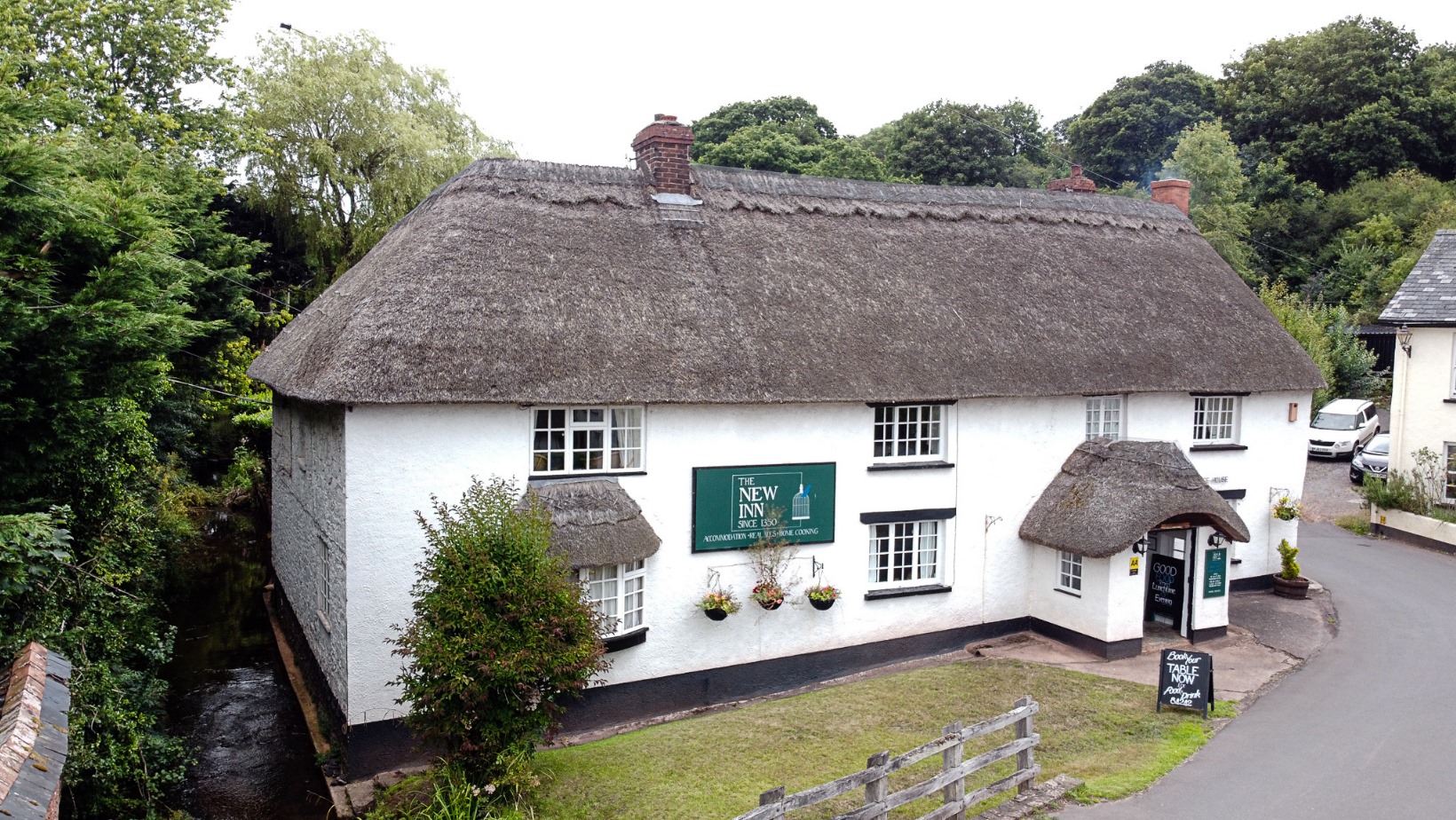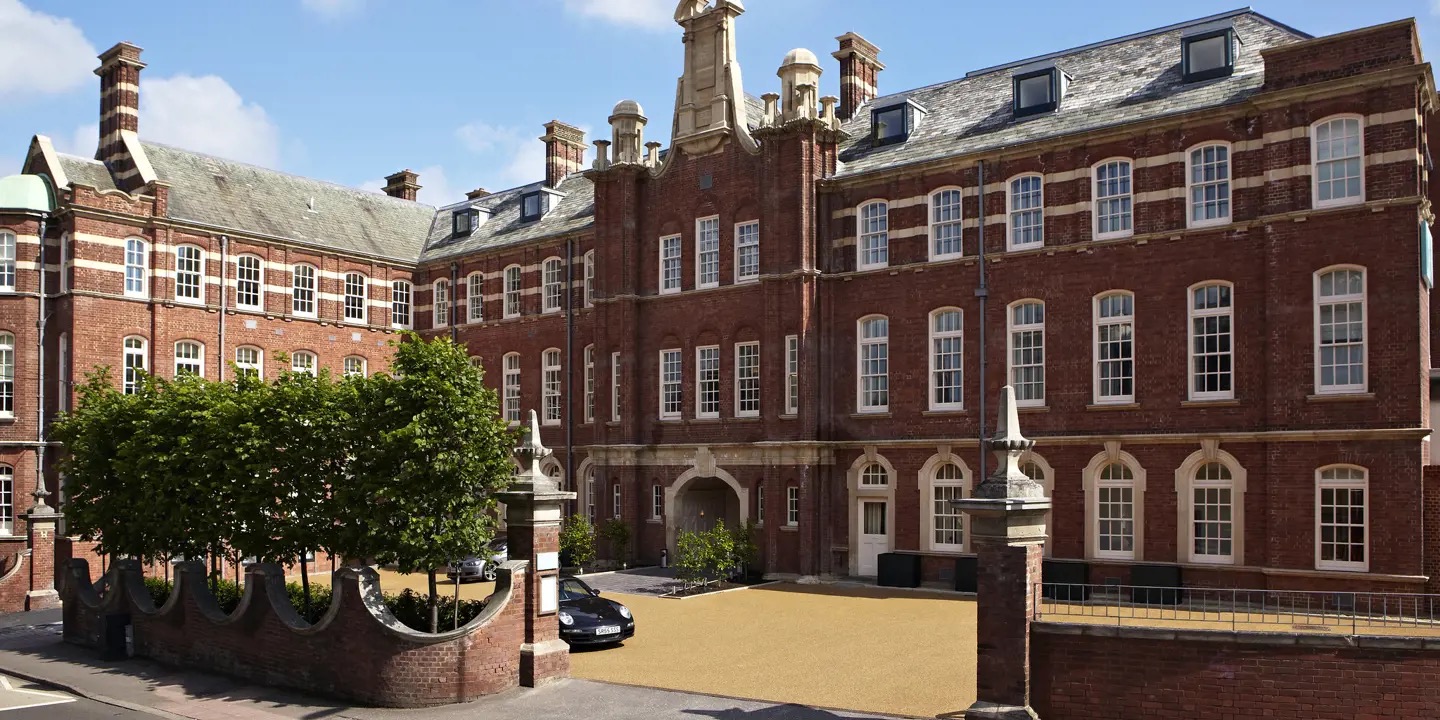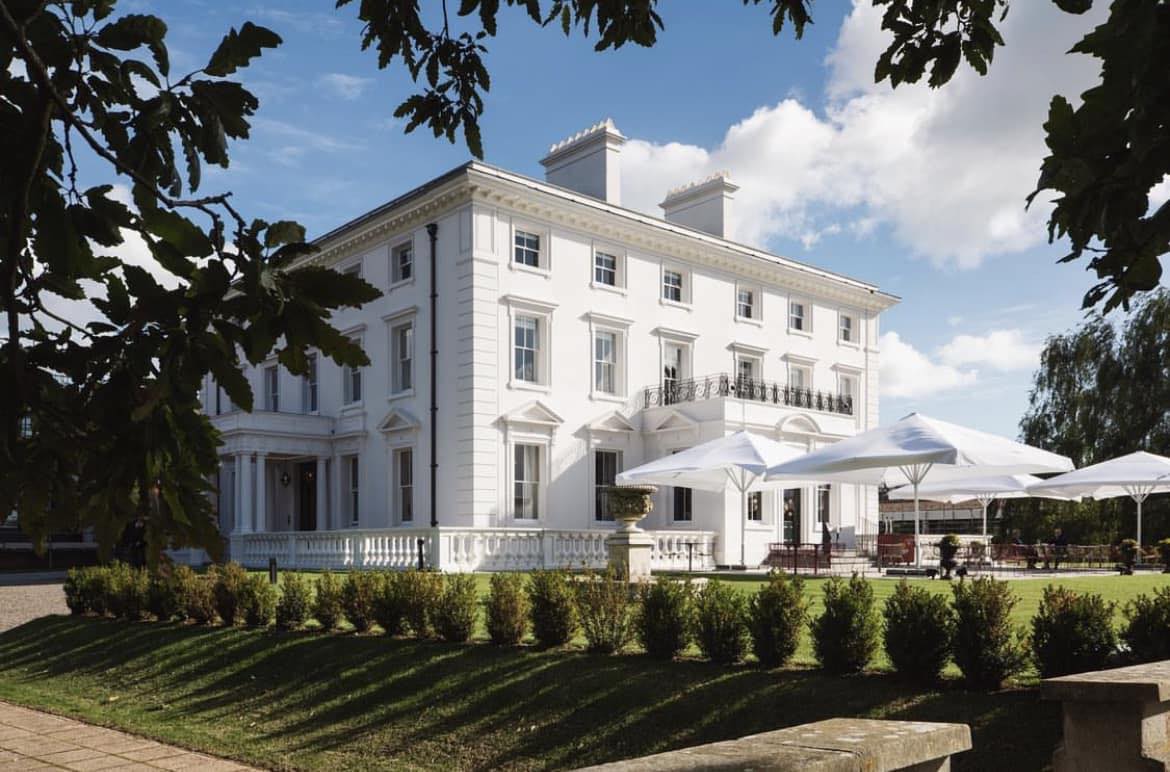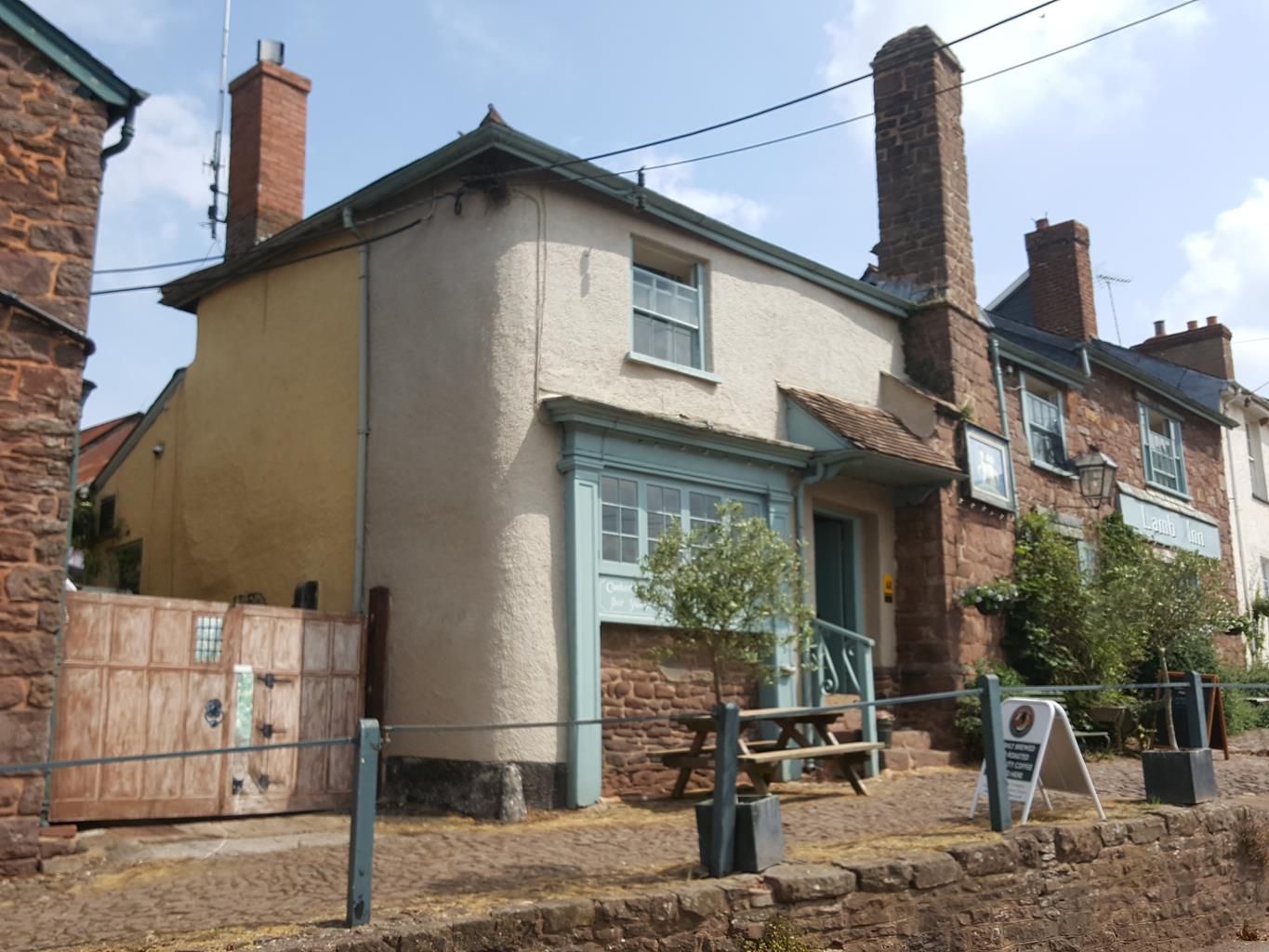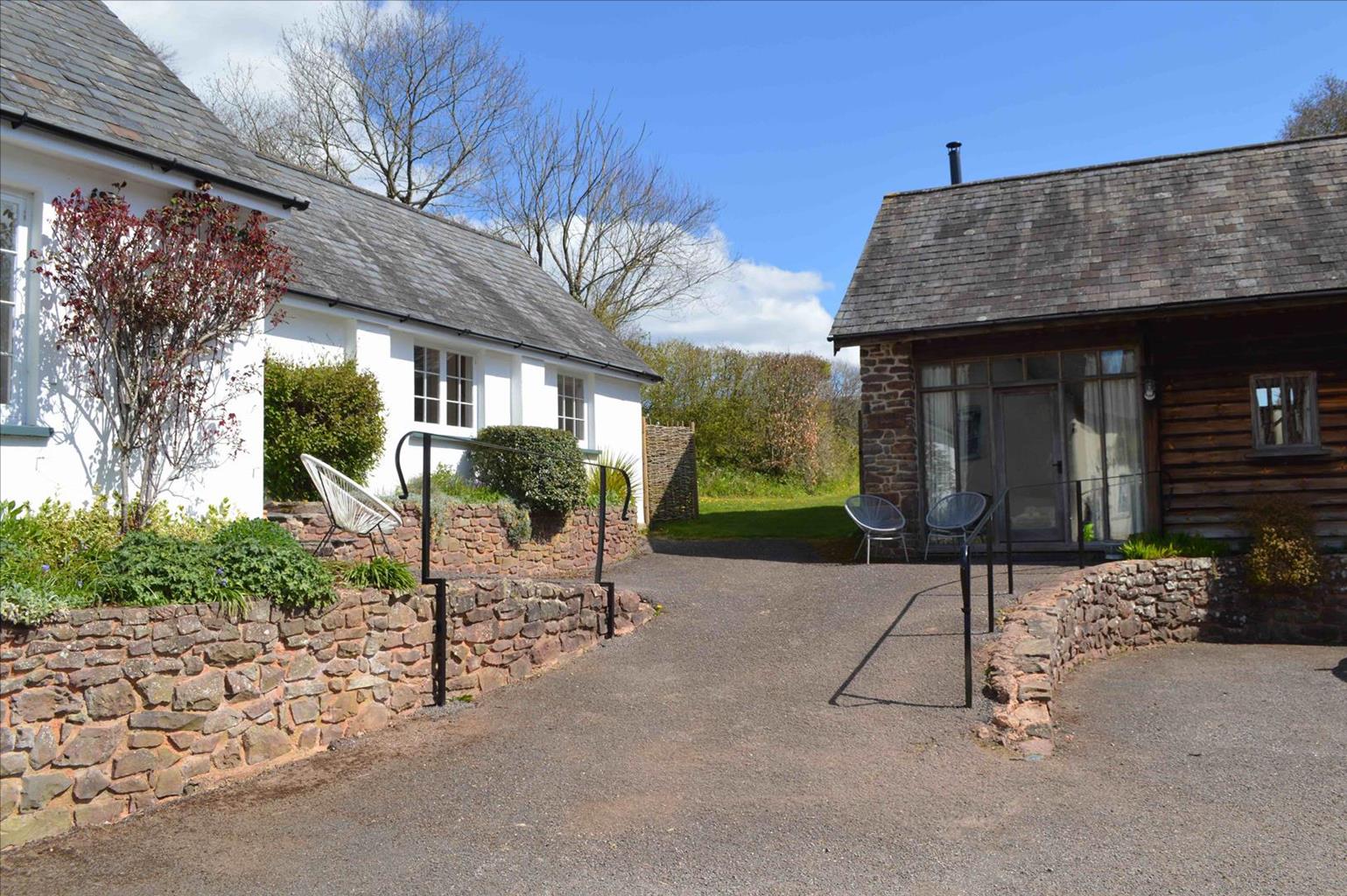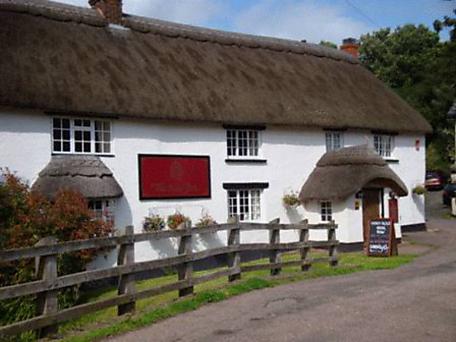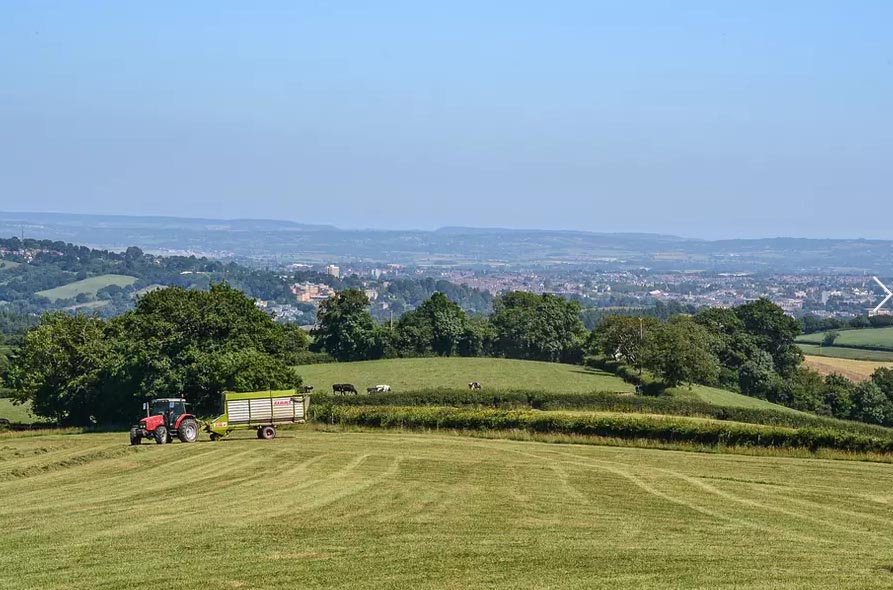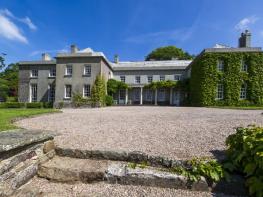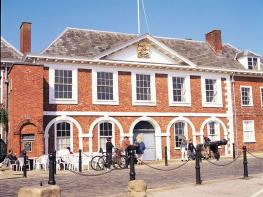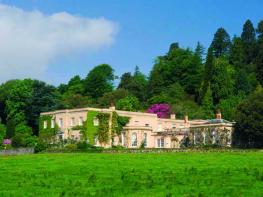The Lamb Inn is the sort of quintessential local that would make any village proud. This is a…
Upton Hellions and the Hellions Ridge

6.25 miles (10.1kms)
About the walk
Sandford is a quintessential Devon village: thatched cottages, 14th-century church, excellent pub and wonderful community shop and post office. This walk makes the most of the parish’s network of footpaths and green lanes that weave through rolling pasture fields and woodland around the valley of the River Creedy. It’s a walk that – unusually for Devon – enjoys sweeping large-scale arable landscapes. The name Sandford (from ‘sandy ford’) predates the Norman Conquest, and the village is thought to have Saxon origins. In a charter dated ad 930 King Athelstan granted land at Sandford to Bishop Eadulf and the clergy of the minster church at Crediton (see below). There are a number of fine houses in the parish: the original house at Creedy Park dated from about 1600, and Sandford’s primary school is housed in a large classical building erected in 1825 by Sir Humphrey Phineas Davie, also of Creedy Park.
The walk visits the little hamlet of Upton Hellions, where the simple church of St Mary’s overlooks the Creedy Valley. Now only used at the great festivals, the church, which has a flagstone floor and box pews and a wonderfully unsophisticated feel, dates from the 12th century. The name ‘Hellions’ is unique, and derives from the name of a Norman settler. The nearby town of Crediton has played an important role in Devon’s ecclesiastical history, being the birthplace of the missionary Wynfrith (later St Boniface) in ad 680. He went on to found the Christian church in parts of Europe (now the Netherlands and Germany). His connections with Crediton probably led to the selection of the town as the seat of the first bishop for Devon and Cornwall, and the building of a cathedral in ad 909. The see moved to St Peter’s Cathedral in Exeter in ad 1050. Work began on a Norman collegiate church in Crediton in 1150; much of the Perpendicular Gothic work seen today in the Church of the Holy Cross dates from 15th-century rebuilding. Interestingly, Boniface is credited with the invention of the Christmas tree when he claimed that a fir tree growing in the roots of a felled pagan oak symbolised Christ and new beginnings.
Walk directions
From the car park turn right along the lane. At the T-junction turn left; the lane soon descends. Just before a left bend turn right through a gate into fields. The permitted path runs left along the field edge to a gate in the far corner (boggy). Keep ahead to another onto a riverside path and turn left.
The path bears right over a footbridge then follows the River Creedy. Pass through a gate and cross a muddy track, then Shaky Bridge over the river. Meet the track again and turn right through a gate into a field; keep straight on, aiming to the right of The Old Mill. Pass through a small gate before the mill and bear right to the lane.
Turn left; after 90yds (100m) turn right through a gate into a field and keep uphill, alongside a fence. Go through a small gate in the fence and continue uphill; bear right by a wall below a big house. Pass through a gate and down the drive to reach the church; keep ahead to a track junction.
Bear left on a track (footpath) that rises steadily between hedges. Stay on it as it undulates through huge fields and gateways with far-reaching views, eventually descending past buildings at Bremridge Farm (dating from around 1450). Follow the drive downhill to the lane near Heath Bridge.
Turn right; a long, steep climb follows but at last the lane levels past Broxford Cottage. About 160yds (146m) later turn right on a bridleway track, with woodland right. Follow the track left and along the left edge of huge rolling fields, with sweeping views towards Dartmoor. The final climb and descent gains the entrance to Bradley Farm (left).
Turn right across fields to reach a track junction at Haske Farm. Keep straight on along a hedged green lane (muddy in places) to reach a tarmac lane. Turn right to reach a junction at Lower Creedy. Turn left downhill to cross the river and meet a T-junction at Thornhedges Cross.
Turn right, slightly uphill. Pass thatched Mooracre (left); opposite farm buildings turn left on a footpath down a narrow lane which leads onto a track across a field. Keep straight on through a small gate onto a path, then through another back into fields. Pass through a bank and then a gate onto a fenced path to meet the road on Rose and Crown Hill.
Cross over and through The Square (Lamb Inn ahead, Sandford Community Stores right). At the corner turn right uphill past St Swithun’s Church; turn left, then first right to the car park.
Additional information
Farm tracks (some muddy), fields and country lanes
Rolling farmland and woodland
Keep on lead in fields
OS Explorer 114 Exeter & the Exe Valley
Sandford Parish Hall car park
At Sandford AFC, on southern edge of village
WALKING IN SAFETY
Read our tips to look after yourself and the environment when following this walk.
Find out more
Also in the area
About the area
Discover Devon
With magnificent coastlines, two historic cities and the world-famous Dartmoor National Park, Devon sums up all that is best about the British landscape. For centuries it has been a fashionable and much loved holiday destination – especially south Devon’s glorious English Riviera.
Close to the English Riviera lies Dartmoor, one of the south-west’s most spectacular landscapes. The National Park, which contains Dartmoor, covers 365 square miles and includes many fascinating geological features – isolated granite tors and two summits exceeding 2,000 feet among them.
Not surprisingly, in Dartmoor the walking opportunities are enormous. Cycling in the two National Parks is also extremely popular and there is a good choice of off-road routes taking you to the heart of Dartmoor and Exmoor. Devon’s towns and cities offer stimulating alternatives to the rigours of the countryside.
Nearby stays
Restaurants and Pubs
Nearby experiences
Recommended things to do
Why choose Rated Trips?
Your trusted guide to rated places across the UK
The best coverage
Discover more than 15,000 professionally rated places to stay, eat and visit from across the UK and Ireland.
Quality assured
Choose a place to stay safe in the knowledge that it has been expertly assessed by trained assessors.
Plan your next trip
Search by location or the type of place you're visiting to find your next ideal holiday experience.
Travel inspiration
Read our articles, city guides and recommended things to do for inspiration. We're here to help you explore the UK.

